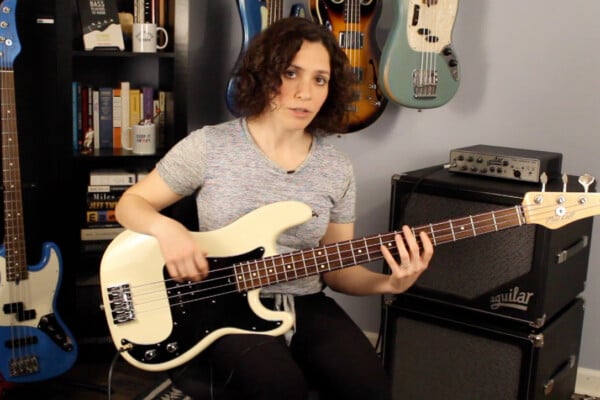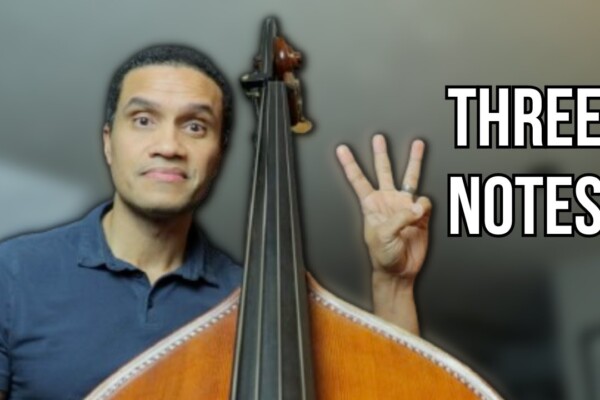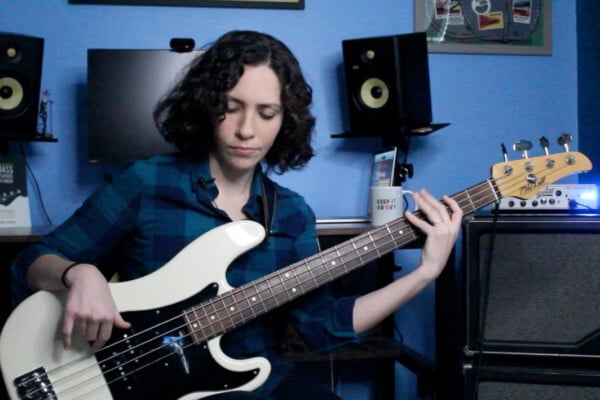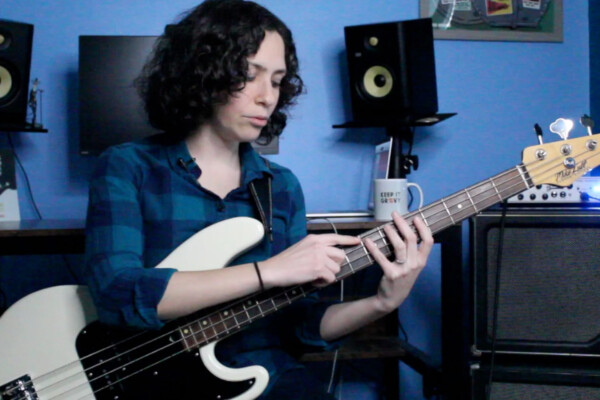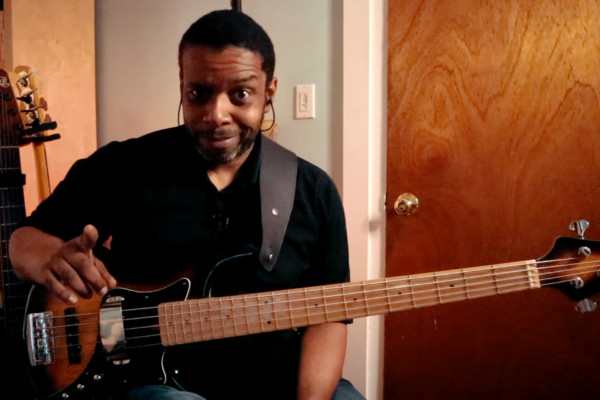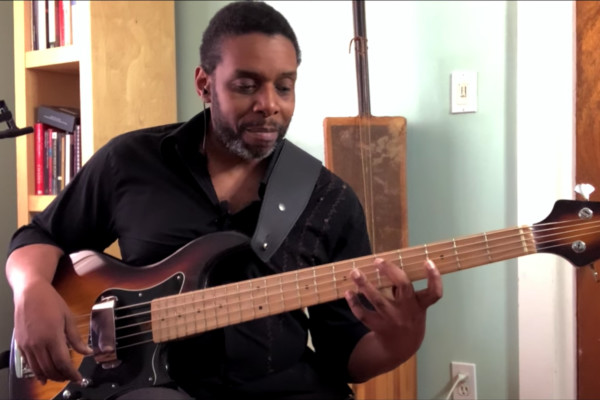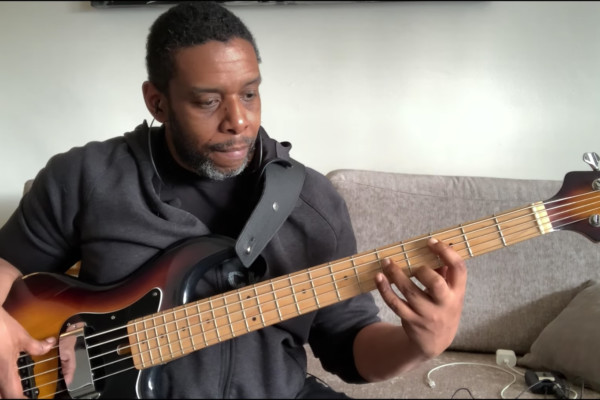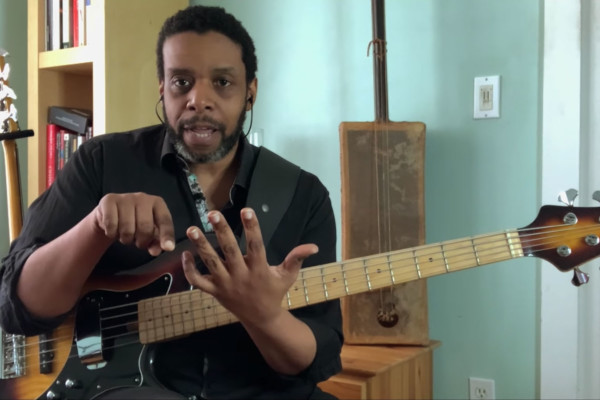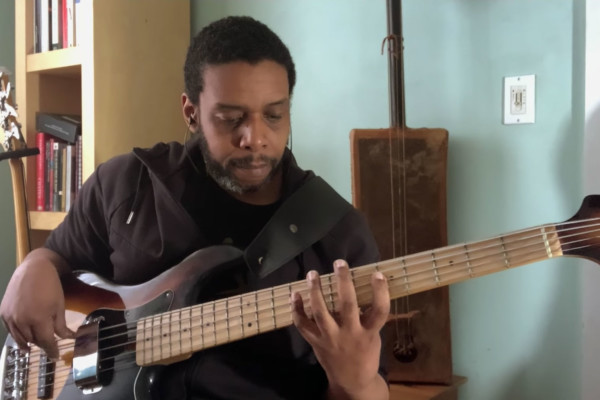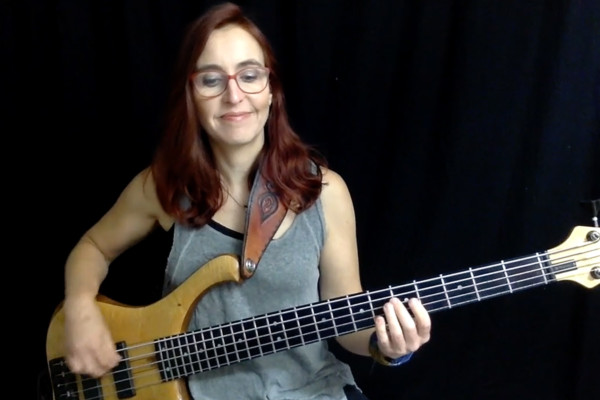Triads Archives
Learn 3 Soul Bass Lines For The Price Of 1
In this lesson, we’ll explore the world of Soul and R&B bass lines and how major triads are used to create memorable parts. Bass players, including Duck Dunn, David Hood and more have used this approach to write iconic bass lines for songs we know and love.
The Three-Note “Hack” To Better Bass Lines (and Solos)
In this episode of “From the Bottom,” Paul Thompson dives into the magical world of triads – our musical building blocks. Be sure to grab the included exercises and follow along.
Keep It Groovy: Using Major and Minor Triads and Making Them Groove: 1-6-2-5 in the key of A
In this “Keep It Groovy” lesson, we take a look at combining our major and minor triad shapes to fit a key and chord progression. We’ll focus on the good ol’ 1-6-2-5 in the key of A.
Keep It Groovy: Learn Minor Triads and Make Them Groove (Key Of A)
In this “Keep It Groovy” lesson, we take a look at minor triad shapes on the bass and figure out how to transform them from an exercise to a groove.
Keep It Groovy: Learn Major Triads and Make Them Groove (Key Of A)
In this “Keep It Groovy” lesson, Ryan Madora takes a look at major triad shapes on the bass and figures out how to transform them from an exercise to a groove.
The Brown’stone: Modes, Triads, & the 2-5-1 (Part 2)
This week in The Brown’stone on No Treble, Rich Brown shares a fantastic exercise that will help you play almost any progression anywhere on the fretboard.
The Brown’stone: The 2-5-1 Chord Progression Using Triads & Inversions
This week in The Brown’stone on No Treble, Rich Brown wants to take another look at triads and inversions. In this lesson, he shows how you can use these three notes to play the II-V-I chord progression in a variety of different ways.
The Beauty in the BASSics: Triads – Part 3
This week in The Brown’stone on No Treble, Rich Brown’s study of triads continues, taking the lessons learned in our last one to create beautiful chords on bass (and use those same shapes to play bass lines).
The Beauty in the BASSics: Triads – Part 2
In Part 2 of this series, Rich Brown continues the study of triads and inversions. You’ll be sure to gain a deeper understanding of the beautiful melodicism found within these three little notes.
The Beauty in the BASSics: Triads – Part 1
Rich Brown is kicking off a new series in his “Brown’stone” lessons, focusing on triads. In this one, Rich shares the different ways to approach the major and minor triads with some straightforward but beautiful exercises.
Talking Technique: Triads Versus Four-Note Chords
Triads versus four-note chords – which are harder? Your gut reaction to that question may be that four-note-chords are harder. Ari tackles this topic in this bass lesson.
Talking Technique: Groove Creation Workout
Want a formula to create grooves over a chord progression? We’ve got you covered in this lesson with an exercise that bolsters our technique while building grooves with triads. We’ll tackle a I-vi-IV-V chord progression using a formula that has two main ingredients: triad notes and rhythm. The triad notes are already laid out for us, but we can pick...
